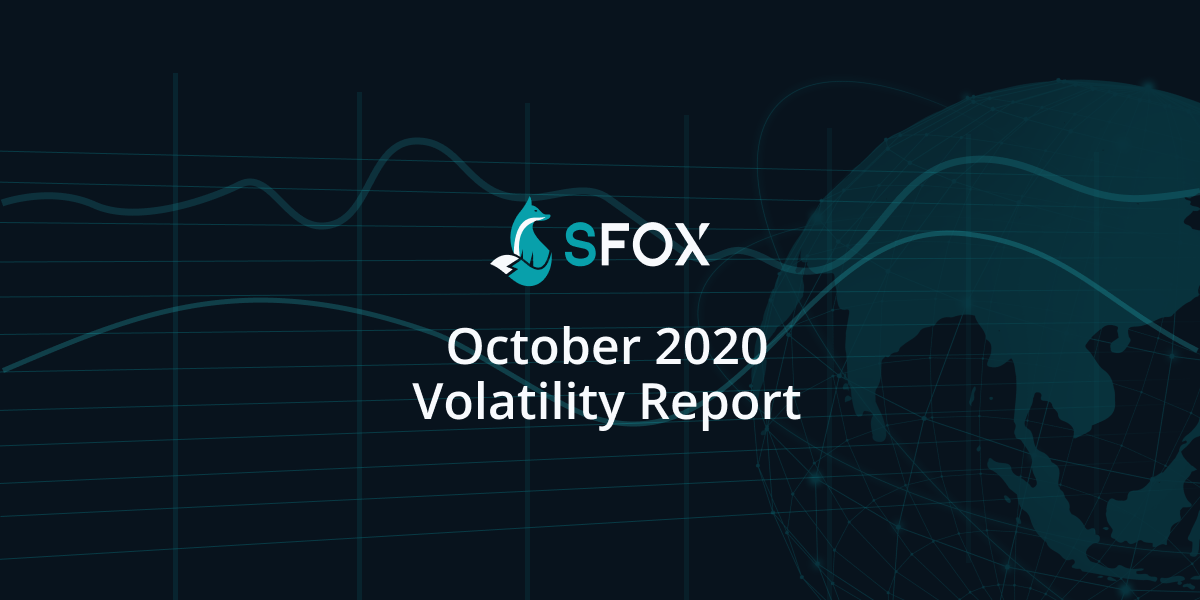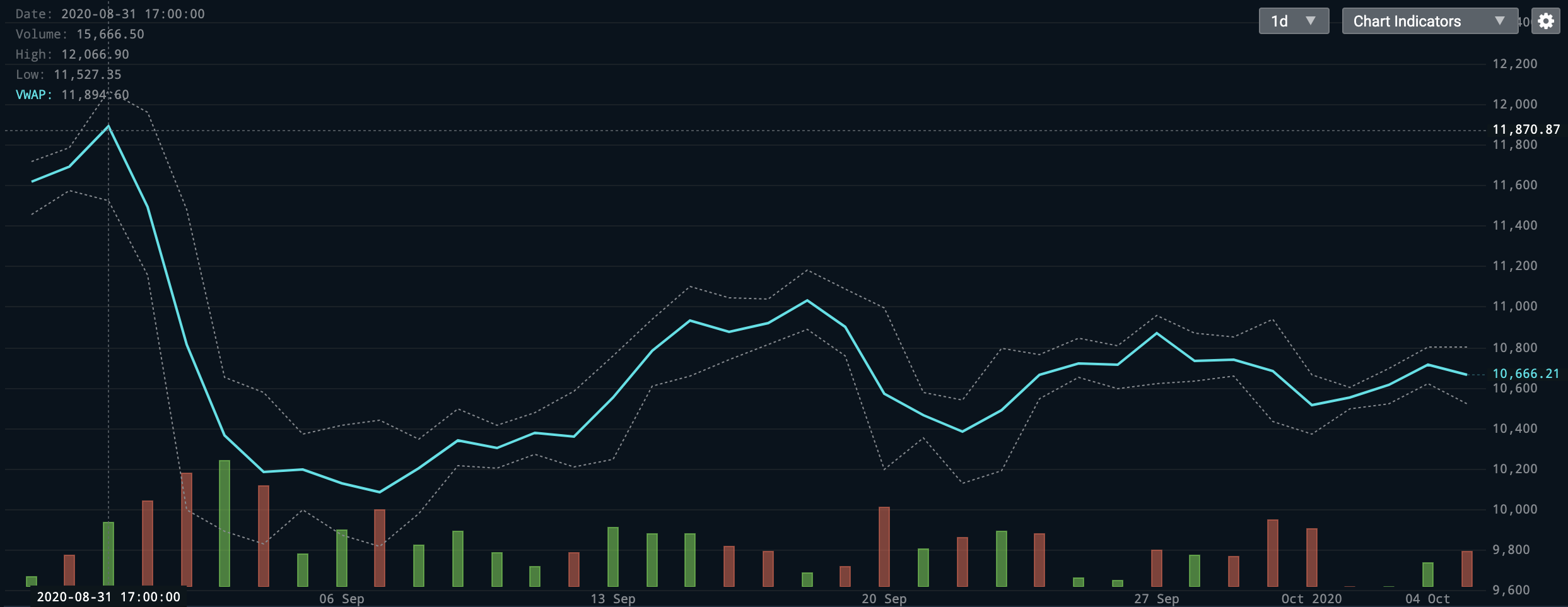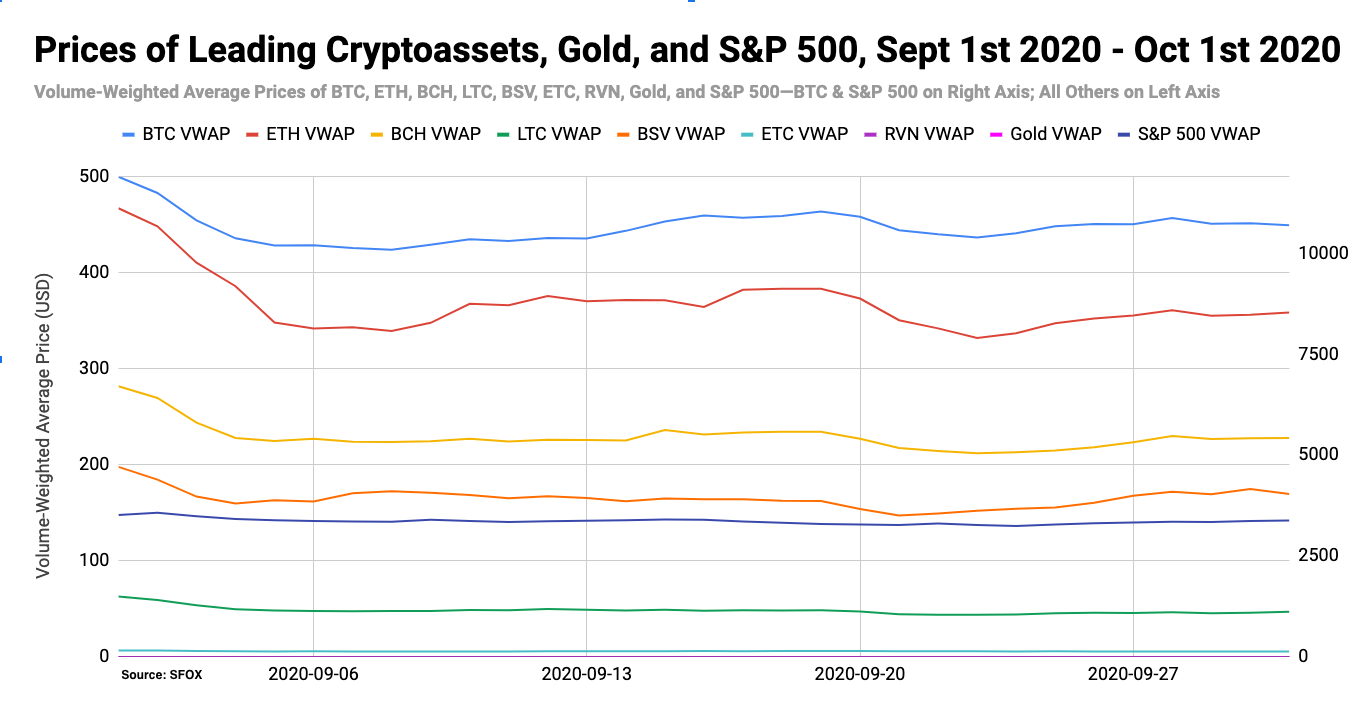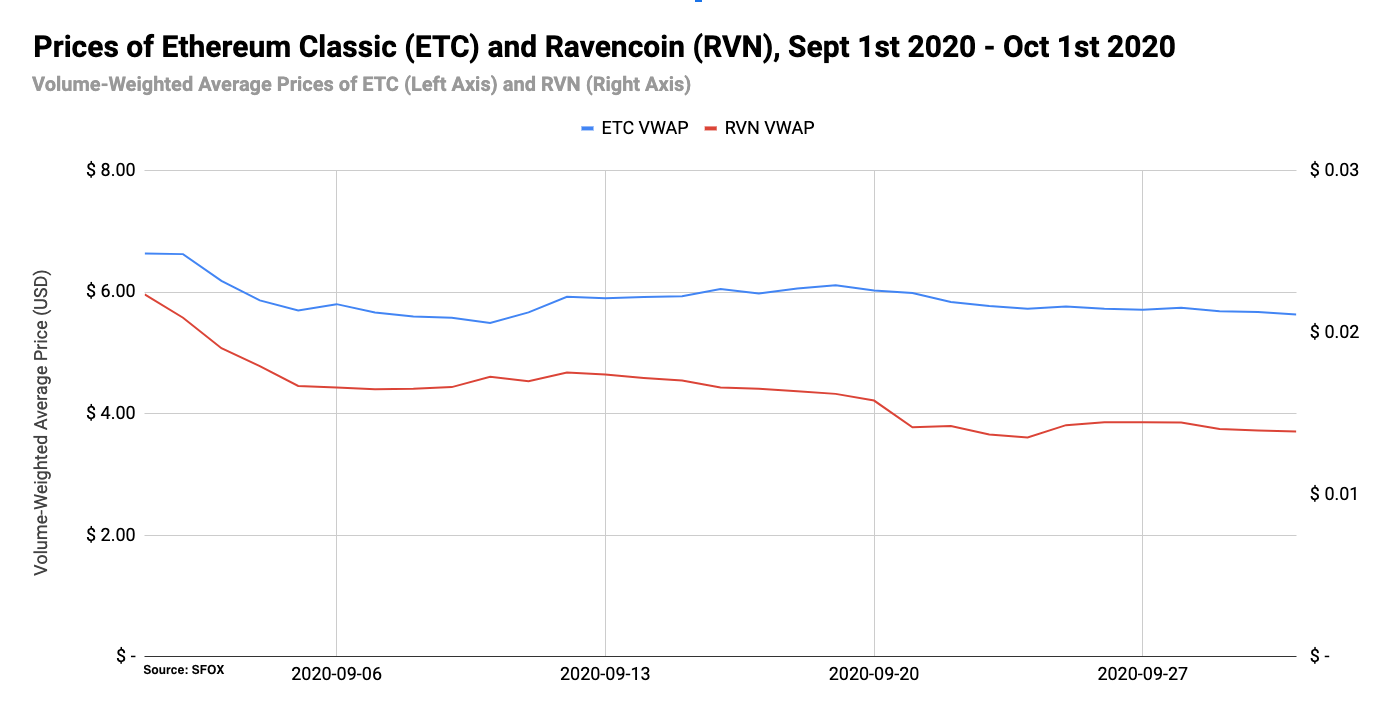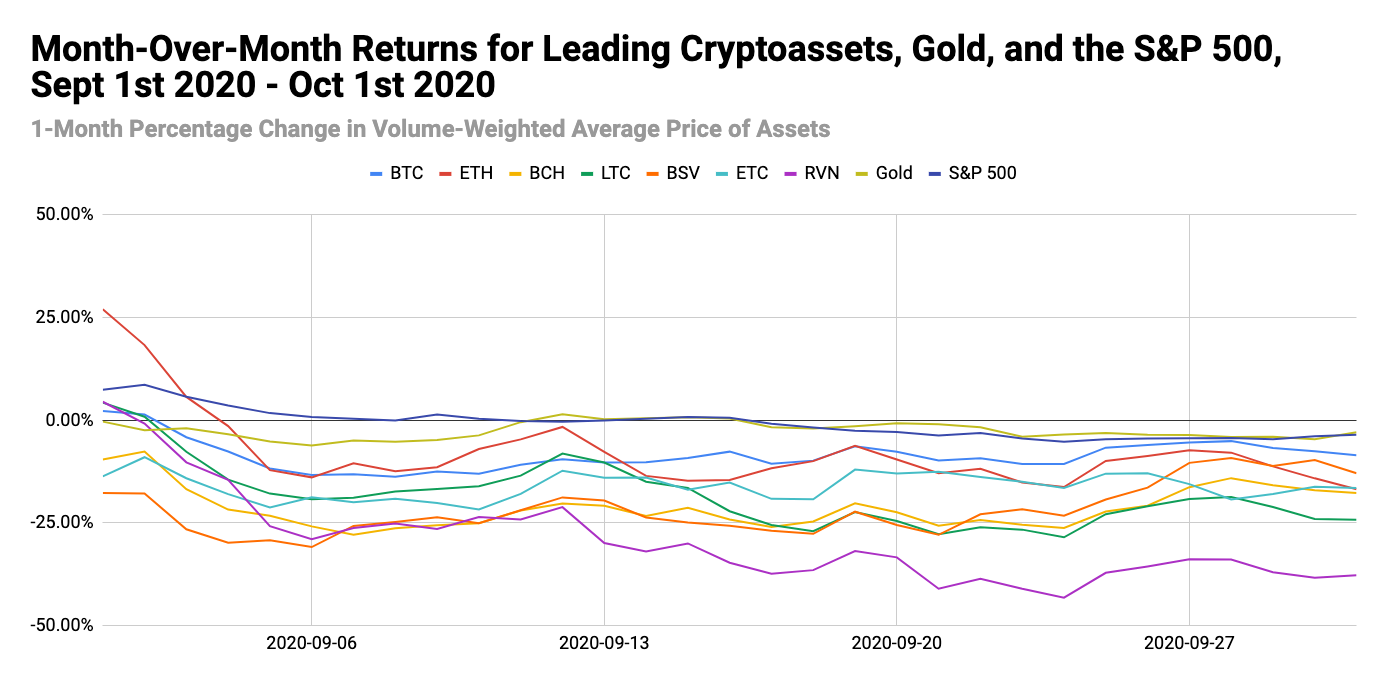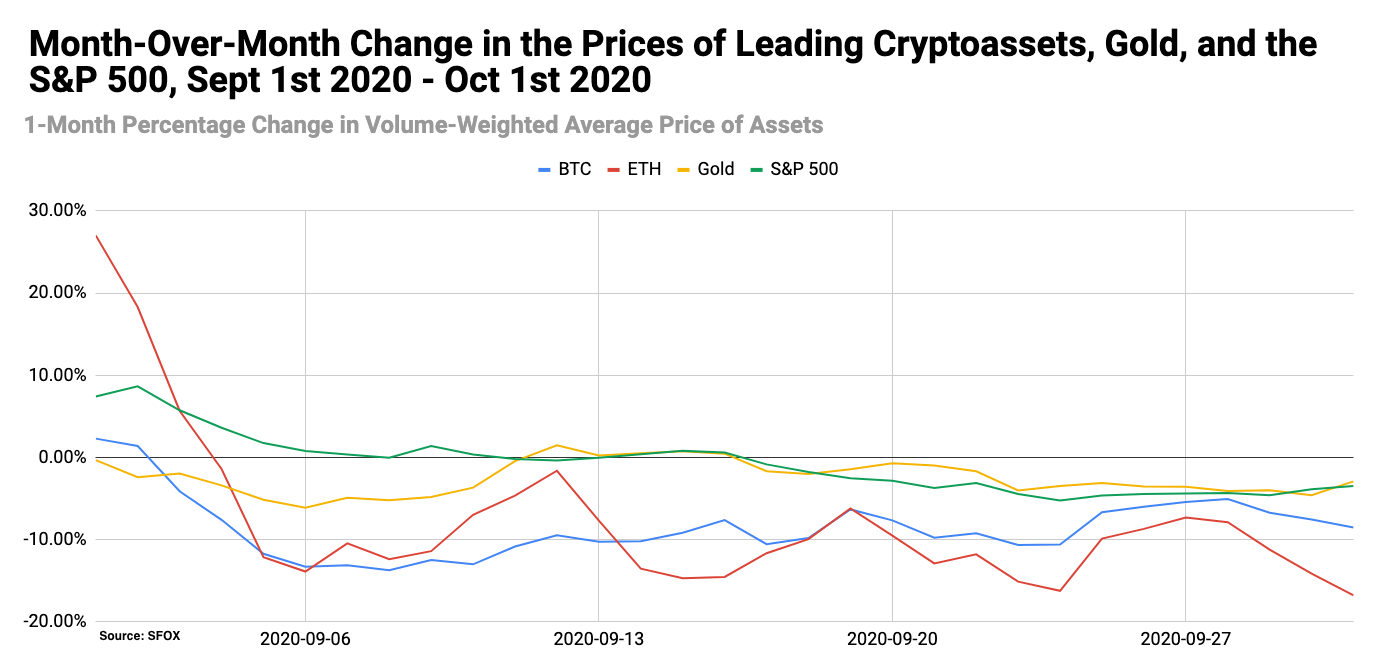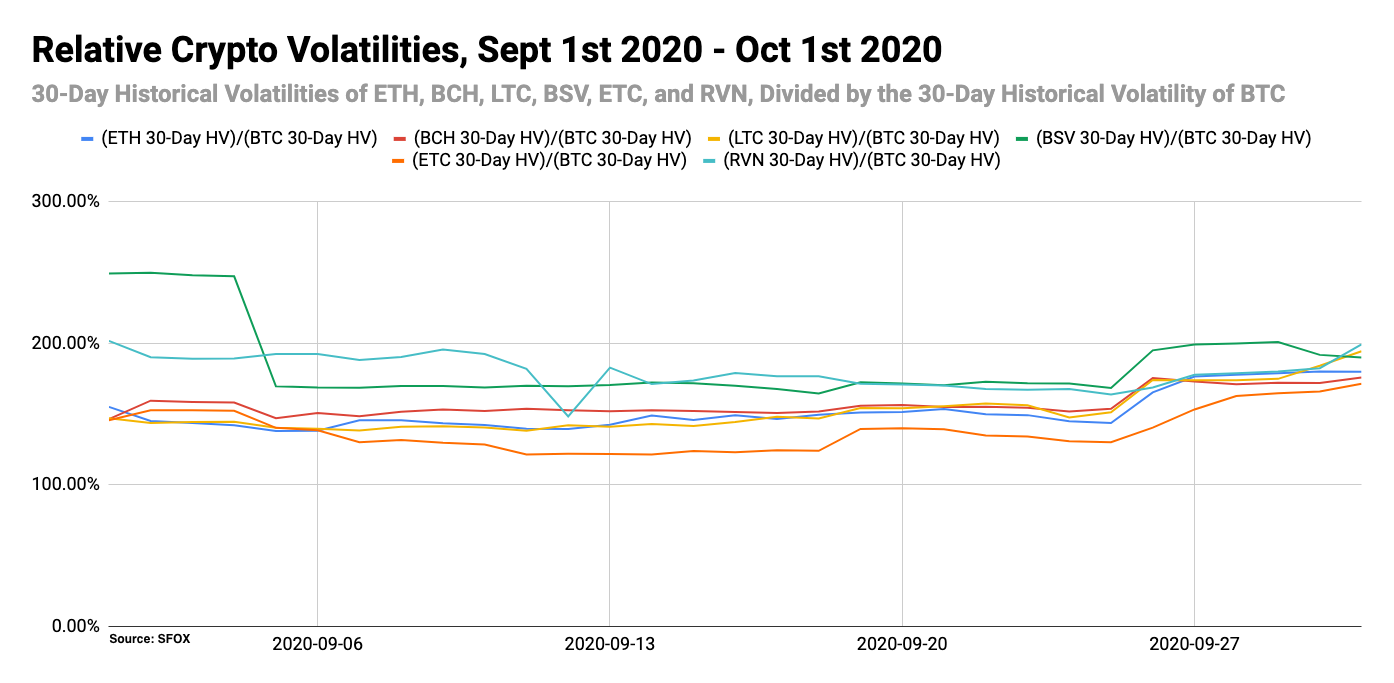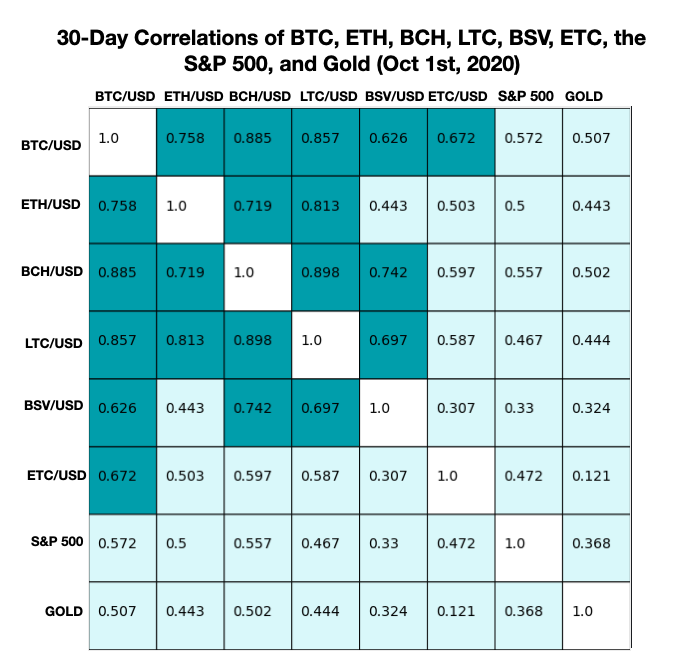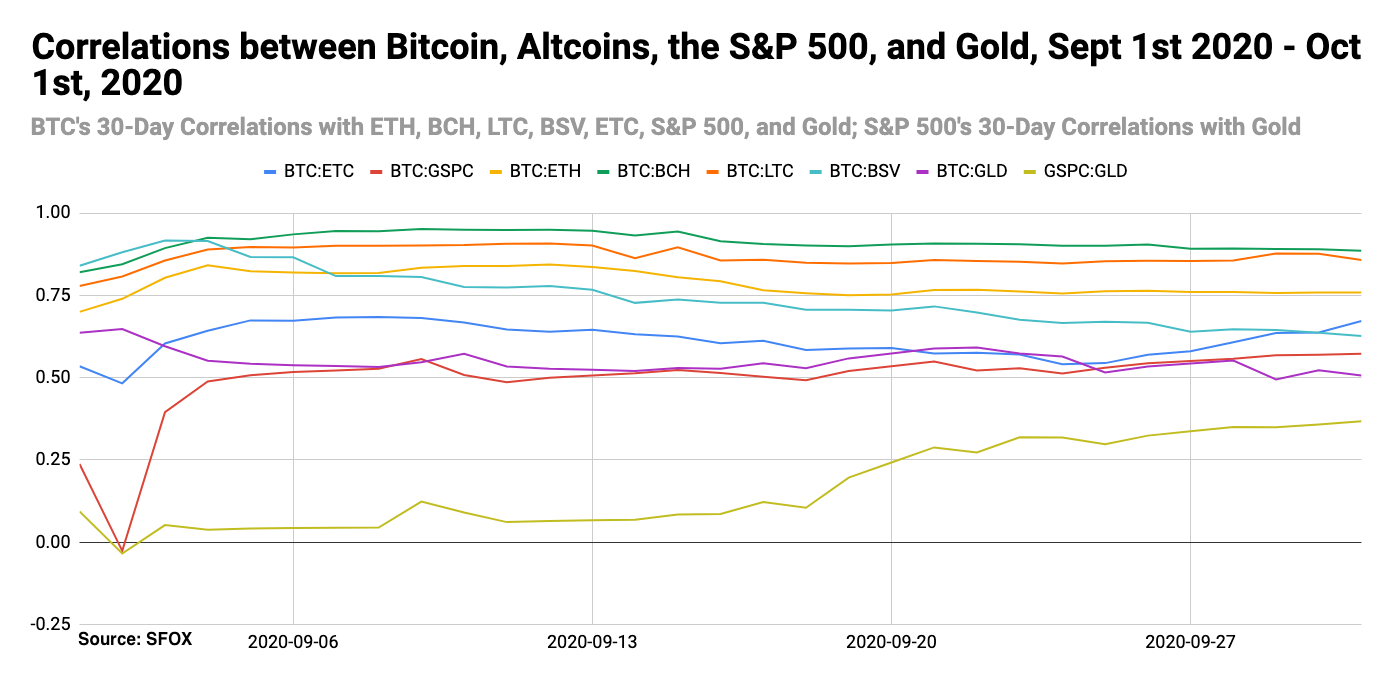- The SFOX Multi-Factor Market Index has been upgraded from neutral to mildly bullish as of October 1st.
- Bitcoin, following August’s yearly high of roughly $12,400, has entered extremely volatile territory and has lost close to $2,000 off its price.
- There is still hope for the asset in that historically, October tends to be a bullish month for bitcoin, though it doesn’t always lead to lasting effects in the fourth quarter. The currency has also remained above $10,000 for more than 63 days – as of October 1st – beating a previously set record.
- SFOX has unveiled its new crypto dark pool, a trading product designed to offer stronger privacy to those engaged in large crypto transactions.
- India is once again considering a ban on cryptocurrency trading.
- A bitcoin bug that’s been kept secret for two years to stop hackers has been discovered in several alternate blockchains.
In the October 2020 edition of the SFOX crypto market report, the SFOX Research Team reviews the crypto market’s volatility, correlations, and other performance metrics throughout the past month. We’ve aggregated price, volume, correlations, and volatility data from eight leading exchanges and liquidity providers to analyze the global performance of 7 major crypto assets — BTC, ETH, BCH, LTC, BSV, ETC, and RVN — all of which are available for smart-routing-powered trading on our trading platform.
The following is a report and analysis of their volatility, price correlations, and further development in the month of September and early October. (For more information on data sources and methodology, please consult the appendix at the end of the report.)
SFOX’s Current Crypto Market Outlook: Mildly Bullish
Based on our calculations and analyses, the SFOX Multi-Factor Market Index, which was set at neutral a month ago, has been upgraded to mildly bullish as of October 1st, 2020.
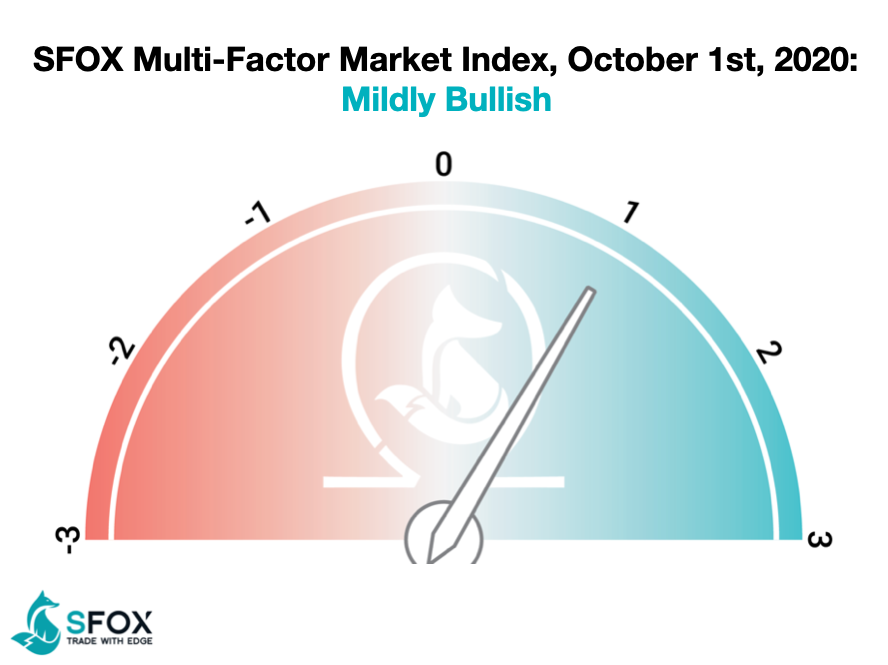
We determine the monthly value of this index by using proprietary, quantifiable indicators to analyze five market factors: price momentum, trade volume, market sentiment, volatility, and continued advancement of the sector. It is calculated using a proprietary formula that combines quantified, marketwide data on asset performance, search traffic, blockchain transactions, and more. The index ranges from highly bearish to highly bullish.
All the crypto assets available for trading on SFOX showed significant losses as of October 1st. Among the crypto assets tracked by this report, RVN showed the greatest loss (37.75%) during the latter half of the month. BTC exhibited more sporadic price behavior, pushing past $11K again on the 19th only to fall by roughly $600 over the next two days, thereby ending the month with losses exceeding 10%. LTC showed the second largest month-over-month losses in the report (24.24%).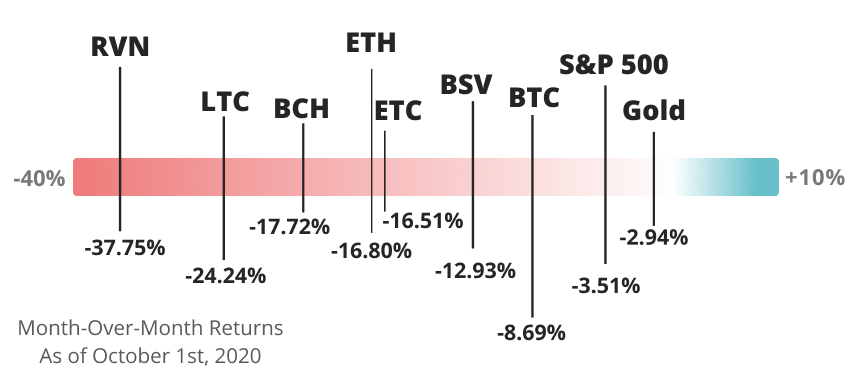
In a month where the major media cycle was bitcoin’s drop from the $12,000 range, the full story of the crypto sector, while bearish, seems to still be largely anticipatory. Bitcoin has stumbled, but there is good news in that it has yet to fall below $10,000 and has maintained a position in five-figure territory for more than 63 days, breaking a previous record set in 2017.
Get the SFOX edge in volatile times through our smart-routing order types that capture the best available crypto prices from all major trading venues directly from your SFOX account.
What’s Happened in the Last Month and What to Watch Next
Markets
September initially began on a promising note for bitcoin, as the currency entered the first day of the month trading above $11,900. It wasn’t long, however, before volatility reared its ugly head to bring the world’s number one cryptocurrency by market cap down to just over $10,000 within 48 hours, knocking nearly $2,000 off bitcoin’s price over the span of two days.
If August initially saw bitcoin experiencing a 2020 high point with a spike to $12,400, September would demonstrate to traders around the world that bitcoin still hadn’t freed itself from the price fluctuations that have become synonymous with most cryptocurrencies. The month saw BTC struggling to reach the $11,000 mark again, which it did on only one occasion. September 19th would witness bitcoin rise to $11,081, giving hope to traders that perhaps bitcoin was once again making its way back up the financial ladder and that August’s $12K high wasn’t a fluke.
Sadly, this was not meant to be, as 24 hours later, the currency fell back to $10,900 and to $10,400 the next day, where bitcoin hovered for the remainder of the month. The asset would spend the remaining weeks of September meandering between $10,200 and $10,700, with $10,400 serving as the monthly average.
September is, historically, a time when bears awaken from hibernation to wreak havoc on financial markets. This year is likely no exception; given bitcoin’s high performance during the previous months, one can relax somewhat in the idea that while September typically brings bad luck and low numbers to the world’s primary digital currency, the damage done may not lead to any lasting effects in the fourth quarter.
In addition, bitcoin has remained above the five-figure ($10,000) line for more than 63 days (September 28th), thereby beating its previously set record of 62 days back in 2017. While volatility still exists, bitcoin’s resilience and strength have grown with each passing year.
Products
SFOX has unveiled its new dark pool, a trading platform that’s designed to provide full anonymity to traders engaged in large crypto transactions. The product is available to both institutional investors and retailers alike and offers what a press release refers to as “zero slippage,” thereby eliminating any potential for price manipulation.
The dark pool is also designed to provide liquidity to institutional players and hasten transaction times to prevent errors. They can also route trade orders across some of the largest crypto exchanges to find top prices while remaining anonymous, a first in the virtual finance arena. Describing SFOX’s latest product was Chris Thomas, Head of Digital Asset at Swissquote, who said that the dark pool “represents the newest step in the company’s mission to bring the most advanced trading tools to the rapidly maturing crypto sector.”
Regulatory
Despite March’s removal of a law that prohibited traditional banks and financial institutions from doing business with cryptocurrency firms, India has stated it is once again considering the possibility of a crypto ban. This time, however, the ban would not be on business or banking relations, but on actual transactions (September 15th), meaning India would boast no presence in the crypto space whatsoever.
The plan has been met with skepticism from industry experts, who claim that such a move would put India behind neighbors such as China, which has ultimately chosen to regulate cryptocurrency trades rather than cross them out entirely. The ban will be discussed by India’s federal cabinet before it moves on to Parliament for further analysis.
To help ease the situation and keep India ahead of the financial game, crypto exchange BuyUCoin has stepped forward to present an official framework for digital currency regulation in India (September 24th). The platform is hoping to gain enough traction with its legislative draft that regulators will agree to step in and monitor crypto activity rather than flush it out. The draft is now openly available for public comment and feedback.
Technical Developments
Details regarding a potential issue with Bitcoin Core—the software powering the world’s number one cryptocurrency—have been kept secret for roughly two years to ensure hackers stay out of the loop (September 12th). The vulnerability—known as INVDoS—has been discovered in alternate forms of crypto since it was first patched up in bitcoin and works as a standard denial-of-service (DoS) attack on the blockchains it infects.
Initially discovered in 2018 by researcher Brandon Fuller, the issue potentially establishes impure bitcoin transactions that can lead to the destruction of memory resources and the crashing of blockchain servers, resulting in (what else?) lost funds. After reporting and fixing the problem, Fuller hid the details of his find for roughly two years to ensure cyberattacks on the bitcoin blockchain were kept to a minimum, though the same problem has since been discovered in currencies such as Litecoin and Namecoin, which ultimately persuaded researchers to come clean and disperse the details of the problem.
The Details: Crypto Price, Volatility, and Correlation Data, July 1st – August 3rd, 2020
Price Performance: Breakout
The volume-weighted average price of Bitcoin (BTC) started September at $11,923.73; BTC’s VWAP fell below the $11,000 level on September 3rd and failed to move past this line again until September 19th, though the surge lasted only 24 hours.
For better visibility of ETC and RVN price movements, please consult the following graph:
All assets tracked by SFOX’s report saw significant losses throughout the month, with RVN having the biggest single day loss of 10.4% on September 21st
For greater graphical clarity, see this additional chart tracking only the daily returns of BTC, ETH, gold, and the S&P 500: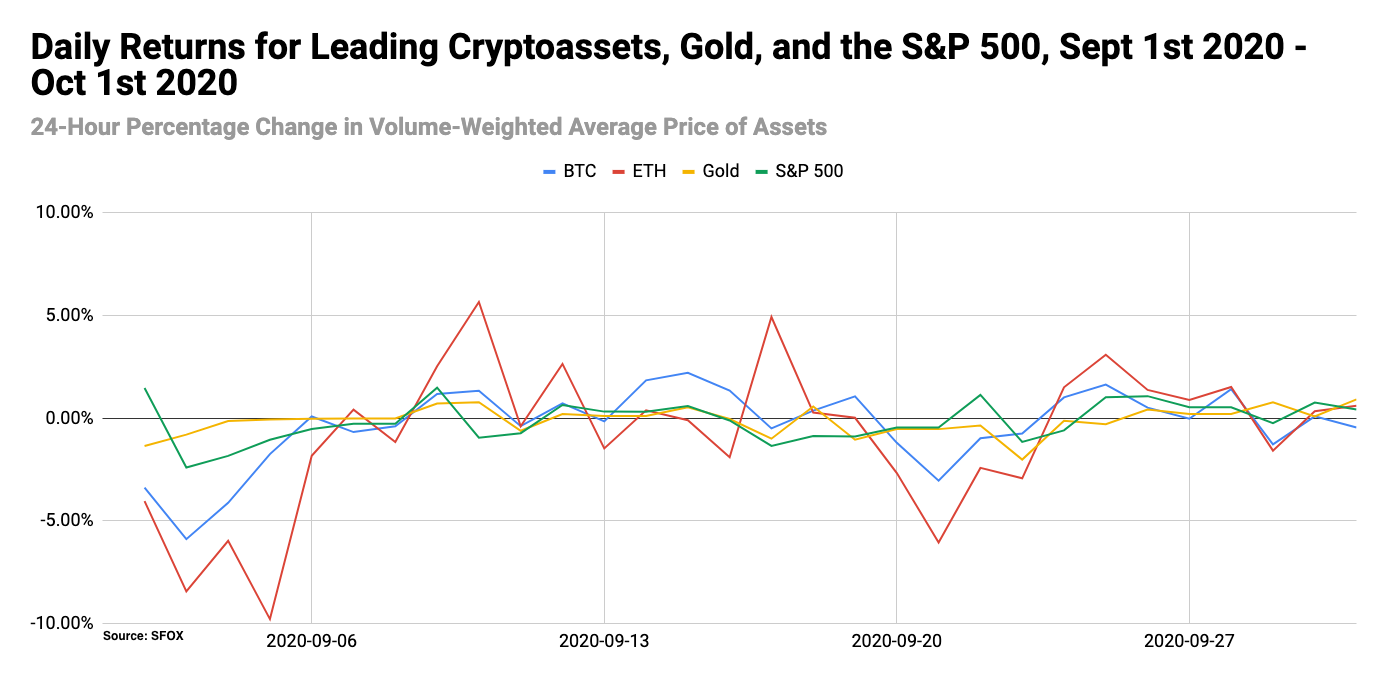
All the crypto assets available for trading on SFOX showed consistent losses as of September 2rd. Unusually, gold and the S&P 500 showed relatively steady behavior and fewer month-over-month returns than all of these cryptocurrencies (both were under 5%). Among the crypto assets tracked by this report, ETH showed the greatest gains (5.66%) during the first half half of the month. BTC exhibited more sporadic price behavior, pushing past $11K again on the 19th only to fall by roughly $600 over the next two days, thereby ending the month with losses exceeding 10%. RVN showed the highest month-over-month avg loss in the report (30.35).
For greater graphical clarity, see this additional chart tracking only the month-over-month changes in the prices of BTC, ETH, gold, and the S&P 500:
Volatility: Ramp-Up
Crypto volatility had generally been trending downward throughout the beginning of the month, though things picked up during September’s latter half. BTC’s 30-day historical volatility was still considerably less than other assets such as Tesla stock according to data from Skew. Overall, bitcoin moved less than 1.25% in absolute value.
By looking at the 30-day historical volatilities of ETH, BCH, LTC, BSV, ETC, and RVN as a percentage of BTC’s 30-day historical volatility, we can see that BTC’s volatility summarily fell behind those of altcoins from September 2nd, the beginning of BTC’s fall to the bears, onward.
Price Correlations: The DeFi Apex?
The noteworthy story in this month’s correlation data is that ETC saw an atypically low correlation with other cryptocurrencies, including BTC. Some market participants may view this as evidence of a change in its blockchain given that its losses for the month were lower (24.1%) than its leading counterparts ETH (31.9%), BCH (28%) and LTC (34.7%). The asset was also one of the top gainers during the latter half of September, suggesting that perhaps ETC’s status as a relatively newer coin keeps it within its own league and prevents it from serving as a mere follower of BTC.
See the full SFOX crypto correlations matrix below:
For a more complete look at BTC’s correlations with other assets throughout the past month, see the following graph:
Conclusion
While the price of bitcoin has faltered during these last 30 days, the crypto space has been blessed with an ever-growing institutional presence led by the likes of companies such as MicroStrategy, which has reportedly purchased more than $400 million in bitcoin. After buying about $250 million worth of bitcoin last August, MicroStrategy shocked enthusiasts everywhere when its CEO, Michael Saylor, announced that another $175 million would be added to the company’s portfolio. Saylor later commented that BTC is more secure than gold and fiat alike.
The bitcoin price moves up and down, but while surges are always appreciated, it is steps like these that will add true, lasting value to bitcoin. The fact that bitcoin’s falling price hasn’t stopped enterprises like MicroStrategy from holding heavy stakes in the asset is proof that the currency’s reputation has solidified in recent years, and will likely continue to do so granted institutions continue to remain active within the world of digital finance.
Appendix: Data Sources, Definitions, and Methodology
All cryptocurrency prices are denominated in USD unless otherwise noted.
Note that data collection for RVN began on February 2nd of this year, which is why RVN is not yet featured in all data analyses. RVN is also denominated in USD for ease of analysis and comparison with other crypto assets, though most RVN trading currently happens in the RVN/BTC pair.
We use two different in-house volatility indices in creating these reports:
- 30-day historical volatility (HV) indices are calculated from daily snapshots over the relevant 30-day period using the formula:
30-Day HV Index = σ(Ln(P1/P0), Ln(P2/P1), …, Ln(P30/P29)) * √(365)
- Daily historical volatility (HV) indices are calculated from 1440 snapshots over the relevant 24-hour period using the formula:
Daily HV Index = σ(Ln(P1/P0), Ln(P2/P1), …, Ln(P1440/P1439))* √(1440)
S&P 500 performance data are collected from Yahoo! Finance using GSPC (S&P 500 Index) data. Gold performance data are collected from Yahoo! Finance using GC=F (June 2020 gold futures contract) data.
30-day asset correlations are calculated using the Pearson method, in accordance with the following formula:
In our calculations, x = 30-day returns for BTC/USD, y = 30-day returns for the other asset in consideration, and r = the correlation coefficient between BTC and the other asset in consideration.
The crypto asset data sources aggregated for crypto prices, correlations, and volatility indices presented and analyzed in this report are the following eight exchanges, the order-book data of which we collect and store in real time:
- bitFlyer
- Binance
- Bitstamp
- Bittrex
- Coinbase
- Gemini
- itBit
- Kraken
Our indices’ integration of data from multiple top liquidity providers offers a more holistic view of the crypto market’s minute-to-minute movement. There are two problems with looking to any single liquidity provider for marketwide data:
- Different liquidity providers experience widely varying trade volumes. For example: according to CoinMarketCap, Binance saw over $20 billion USD in trading volume in November 2018, whereas Bitstamp saw $2 billion USD in trading volume in that same time — an order-of-magnitude difference. Therefore, treating any single liquidity provider’s data as representative of the overall market is myopic.
- Liquidity providers routinely experience interruptions in data collection. For instance, virtually every exchange undergoes regularly scheduled maintenance at one point or another, at which point their order books are unavailable and they therefore have no market data to collect or report. At best, this can prevent analysts from getting a full picture of market performance; at worst, it can make it virtually impossible to build metrics such as historical volatility indices.
Building volatility indices that collect real-time data from many distinct liquidity providers mitigates both of these problems: collecting and averaging data from different sources prevents any single source from having an outsized impact on our view of the market, and it also allows us to still have data for analysis even if one or two of those sources experience interruptions. We use five redundant data collection mechanisms for each exchange in order to ensure that our data collection will remain uninterrupted even in the event of multiple failures.
Disclosure: The above references an opinion and is for informational purposes only. It is not intended as and does not constitute investment advice, and is not an offer to buy or sell or a solicitation of an offer to buy or sell any cryptocurrency, security, product, service or investment. Seek a duly licensed professional for investment advice. The information provided here or in any communication containing a link to this site is not intended for distribution to, or use by, any person or entity in any jurisdiction or country where such distribution or use would be contrary to law or regulation or which would subject SFOX, Inc. or its affiliates to any registration requirement within such jurisdiction or country. Neither the information, nor any opinion contained in this site constitutes a solicitation or offer by SFOX, Inc. or its affiliates to buy or sell any cryptocurrencies, securities, futures, options or other financial instruments or provide any investment advice or service.
